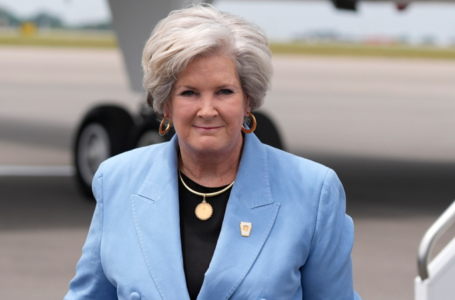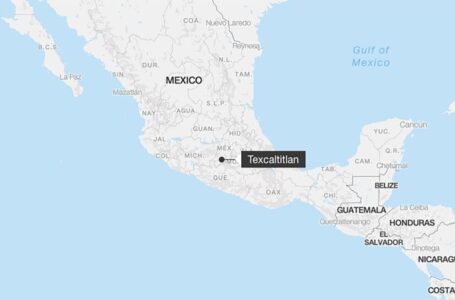Get to know Donald Trump’s Cabinet: Who has the president-elect picked so far?
When do we do a Greece?


The annual Article IV consultation between the Philippines and the International Monetary Fund (IMF) for 2023 was concluded by the Fund’s Executive Board on Nov. 27, 2023. A press release was subsequently issued this month with the main message that “the Philippines’ growth momentum started to moderate after a strong post-pandemic recovery.”
It was quite a moderation.
From 2022’s 7.6% to 4.3% in the second quarter of 2023, the economy was humbled mostly by external headwinds, weak public spending, and dissipation of pent-up demand. Elevated inflation undermined private consumption even as the labor market showed some improvements. Weak imports mostly of fuel and capital goods motivated a more modest current account deficit.
Of course, we are wiser today because we know that the economy staged a 5.9% strong recovery in the 3rd quarter. Perhaps, the Fund with this information could update its forecasts of 2023 to 2025 of 5.3%, 6%, and 6.1% to more optimistic levels. But upgrading its growth forecasts might prove daunting because consumption could remain relatively sluggish compared to its average 7.7% performance in 2022. The external sector challenged by war and more war could even be more ominous such that even a tentative risk assessment should point us to more realistic assumptions and projections.
Which makes us wonder why, with a three-quarter average gross domestic product (GDP) growth of 5.5%, the Development Budget Coordination Committee (DBCC) decided to maintain the growth target for 2023 at 6% to 7%. For 2024, some slight downgrading to 6.5% to 7.5% was done, with an upward tweak for 2025-2028 at 6.5% to 8%. We thought official forecasts that many times deviate from the actual outcome could also erode public trust in official pronouncements and undermine ownership of public policy.
During the consultation, the Philippine authorities highlighted the upside to economic growth from recent initiatives to encourage more foreign investment and digitalization of the economy. In principle, they concurred on the importance of improving connectivity and upskilling the labor force but how these are to be mainstreamed has to be worked out. Existing social protection programs were claimed as well targeted while sustainable finance was reported to have limited impact.
In the Fund, there is relatively less optimism about the Philippines.
It projects a growth of only 5.3% for this year, 6% next year, and 6.1% in 2025 — or lower than the lower end of the Government’s targets. Given its weight in total output, weaker consumption, both private and public, could drive the possible weak economic performance in the next two years. One can always argue, and we agree, that a 6% output growth is not something we can trivialize or belittle. At that rate, the Philippine economy could very well be one of the fastest growing economies in this part of the world.
The point is that we need to grow more to build more infrastructure and provide more social services, we need to grow more to address the issues of poverty and income inequality.
How public policy can help bring this about still has to be worked out to the last detail. Tax to GDP ratio is expected at only about 15% in the next two years. While World Bank metrics would say anything above 15% is desirable, other countries which experienced periods of high economic growth had much more than that. True, we have the Medium-Term Fiscal Framework which establishes more ambitious tax measures to create more fiscal space. However, the current fiscal challenge of reforming the military pension system, rationalizing public spending, and reducing contingent liabilities would certainly call for a much wider fiscal flexibility.
We can validate the reality of these challenges. For local business leaders, they could not be more optimistic than saying that the country’s economic growth in the coming year is faced with difficult issues. They include geopolitical conflict, ease of doing business, and overall global economic slowdown. This guarded sense comes from business leaders from the Philippine Chamber of Commerce and Industry, the International Chambers of Commerce in the Philippines, the Philippine Exporters Confederation, and the Employers Confederation of the Philippines.
In turn, we see this mirrored by the results of the 4th quarter Business Expectations Survey (BES) of the Bangko Sentral ng Pilipinas (BSP). As we stressed in our report in the GlobalSource Partners for the Philippines this week, this is quite representative of business sentiment in the Philippines with 1,543 firms surveyed nationwide, with 583 firms in the National Capital Region, and 965 companies outside the National Capital Region covering 16 regions with a response rate of 65.1%. All firm sizes were represented quite well: 43.7% were small; 33.6% medium; and nearly 13% large.
The latest BES Survey showed that Philippine businesses remained modestly positive in their outlook for the current quarter compared to the previous quarter as measured by the BSP Confidence Index (CI). The CI was up by only 0.1 percentage point in Q4 2023 (35.9) compared to Q3 2023 (35.8).
This broadly steady sentiment, as cited by the business respondents themselves, was attributed to businesses’ expectations for: a.) some increase in demand for goods and services during the Christmas season, b.) sustained economic recovery to pre-pandemic levels, c.) business expansions in the utilities, trade, financial, and hotels and restaurant sub-sectors, d.) development and launch of new products and services, and, e.) brisker consumer spending on the back of higher remittances and inbound holiday travelers, including Overseas Filipino Workers (OFWs).
However, this optimism was tempered by concerns over: a.) the negative economic impact of the ongoing conflicts in Gaza and Ukraine, b.) elevated inflation, and, c.) higher interest rates, as similarly identified in the report.
This 4th quarter results have limited relevance because the last quarter is almost over. But for the 1st quarter 2024 and the next 12 months, the CI significantly plunged to 38.2 from 53.8 and from 59.7 to 54, respectively. Concerns about the: a.) negative effects of the Israel-Hamas and Ukraine-Russia conflicts on the economy, including higher oil prices, b.) lower demand for goods and services, c.) higher prices of basic goods, d.) increasing interest rates, and, e.) higher costs of production and raw materials motivated this less favorable outlook.
Our business respondents also pointed out such growth-negative macroeconomic outcomes as elevated inflation, higher market interest rates, peso depreciation, and limited job opportunities.
If there is anything that should be prioritized, it is raising productivity and harnessing the digital economy, both of which were discussed only in the latter part of the staff report under structural policies. It’s imperative to sustain the economic gains in the last 20 years and benefit from what the Fund already called a demographic dividend. However, this is possible only when the Philippines is able to attract foreign investments to help diversify exports, harness new skills, and strengthen connectivity across the country.
In particular, the Fund observed that given the country’s dominant services industry, it is crucial to raise labor productivity through digital skills and portability.
By all means, upskilling should be taken up while the use of artificial intelligence should be broadened. Industry should aspire to move up the global value chains as the country continues to improve on its digital infrastructure.
All these productivity-raising strategies can guarantee multiple gains in economic growth, make it more sustainable and self-sustaining, and create the right conditions for mitigating poverty and income inequality. As the recent edition of The Economist commended Greece as its country of the year, “it is possible to enact tough, sensible economic reforms, rebuild the social contract, exhibit restrained patriotism — and still win elections.”
As The Economist narrated, a decade ago Greece was literally crippled by heavy indebtedness with its people’s incomes eaten up by high inflation and chronic unemployment. Political extremism was tearing the country apart. Corruption eroded public governance and left its infrastructure in disrepair. Civil liberties of migrants were violated. Unpopular but appropriate economic restructuring ameliorated this state of affairs. The people caught up and realized the country is moving in the right direction. The reformers won popular support.
For its part, this Government should use its massive political capital during the 2022 election in getting all sensible public policies off the ground. The next electoral exercise will simply test whether the right economic reforms were put in place, and whether civil society has caught up with the reform program.
We have started right with what The Economist would refer to as our continuing determination to hold our nerve “in the face of Chinese aggression, often in collaboration with America. The Philippines defended its maritime boundaries, and the law of the sea, against much bigger Chinese ships.”
When then do we do a Greece?
Diwa C. Guinigundo is the former deputy governor for the Monetary and Economics Sector, the Bangko Sentral ng Pilipinas (BSP). He served the BSP for 41 years. In 2001-2003, he was alternate executive director at the International Monetary Fund in Washington, DC. He is the senior pastor of the Fullness of Christ International Ministries in Mandaluyong.











